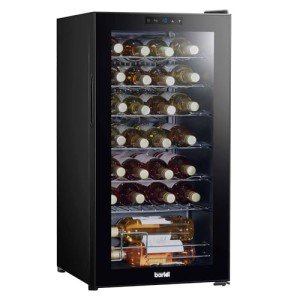The Ultimate Guide to Buying a Fridge: Making Smart Choices for Your Kitchen
When it comes to necessary kitchen home appliances, couple of products are as essential as a refrigerator. It is the heart of the kitchen-- keeping your food fresh and your active ingredients at optimum temperature levels. Nevertheless, choosing the right fridge can be a complicated task, given the range of designs, sizes, and technologies readily available on the marketplace. This guide will provide valuable insights into the factors to think about when purchasing a fridge, common types, and often asked concerns to help you make an informed choice.
Key Factors to Consider When Buying a Fridge
To streamline your decision-making process, here are the core factors one need to consider when seeking to buy a fridge:
1. Size
- Cooking area Space: Measure the area in your kitchen where the fridge will be put. This consists of inspecting entrances to make sure the fridge can be provided without concern.
- Capability: Consider just how much food you usually keep. A larger home might need a fridge with a capacity of 20-26 cubic feet, while smaller sized families may find 10-18 cubic feet adequate.
2. Style
- Leading Freezer Refrigerators: A standard option that features a freezer on top. They are usually more budget-friendly and energy-efficient.
- Bottom Freezer Refrigerators: Offers convenience by putting the refrigerator section at eye level. Ideal for those who access fresh food more frequently.
- Side-by-Side Refrigerators: Provides simple access to both freezer and fresh food sections. Great for narrow kitchens.
- French Door Refrigerators: Combines the advantages of bottom freezers with side-by-side layouts. They often include additional features such as ice and water dispensers.
- Compact Refrigerators: Perfect for little spaces like dormitory or workplaces.
3. Energy Efficiency
- Try to find energy-efficient designs to save money on electricity costs. Inspect the Energy Star label, which suggests that the device fulfills or surpasses energy performance standards.
- Consider the average yearly energy usage reported in kilowatt-hours (kWh).
4. Features
- Ice and Water Dispenser: Convenient for instant access to ice and filtered water.
- Smart Technology: Some fridges come equipped with Wi-Fi connection that enables you to keep an eye on and change settings from your smart device.
- Adjustable Shelves and Bins: For customizable storage to accommodate tall items.
- Temperature Control Zones: Different locations might have various environment controls for optimum storage of different foods.
5. Cost
- Set a budget plan. Fridge rates can vary from a few hundred to a number of thousand dollars depending on style, size, and functions.
- Think about extra expenses such as extended service warranties, shipment, and setup.
Comparative Table of Popular Fridge Styles
| Fridge Style | Average Price Range | Pros | Cons |
|---|---|---|---|
| Top Freezer | ₤ 400 - ₤ 1,200 | Cost effective, energy-efficient | Minimal functions |
| Bottom Freezer | ₤ 900 - ₤ 2,500 | Easy access to fresh food | Can be expensive |
| Side-by-Side | ₤ 600 - ₤ 3,000 | Excellent organization, easy gain access to | Freezer space can be restricted |
| French Door | ₤ 1,200 - ₤ 4,000 | Roomy, stylish, often feature-rich | Greater rate point |
| Compact | ₤ 150 - ₤ 600 | Space-saving, portable | Restricted storage capability |
Frequently Asked Questions (FAQs)
1. For how long do refrigerators typically last?
Typically, a well-kept refrigerator can last around 10 to 20 years. Regular upkeep, such as cleaning up the coils and checking door seals, can lengthen its life expectancy.
2. How can I maintain my fridge efficiently?
- Keep the coils clean to assist preserve energy performance.
- Guarantee that the door seals are tight to avoid cold air from escaping.
- Regularly thaw (if applicable) and clean the interior to avoid accumulation of bacteria and odors.
3. Do Buy A Fridge Freezer require to spend for shipment and setup?
Most merchants charge for shipment and installation, but this cost can sometimes be waived during promos. Always validate the charges before finishing your purchase.
4. What should I do if my fridge is not cooling properly?
Start by checking the temperature level settings and guarantee the vents are clear of any obstructions. If the issue continues, it might be required to speak with a professional repair work service.
5. How can I identify the size of the fridge I need?
As a basic guideline, permit about 4 to 6 cubic feet of space per individual in your home. However, this can differ based upon private cooking and storage routines.
Purchasing a refrigerator might seem basic, but it needs careful factor to consider of different aspects. By assessing your needs and preferences in terms of size, style, functions, and energy performance, you're much better placed to choose a fridge that will serve your home well for many years to come. This guide intends to streamline the intricacies included in fridge shopping, empowering you to make a notified decision that will enhance your kitchen experience. Whether you're upgrading or purchasing your very first system, a little research study can cause a refrigerator that completely fits your lifestyle and culinary routines.

